|
The Seiko Spring Drive: Innovation and Refinement, Part 3
A Visit to the Seiko Epson Factory, in Shiojiri, Nagano prefecture
Upon completion of our meeting with the Seiko Watch Corporation
executives, we caught a train at Shinjuku station – destination: the
town of Shiojiri in the mountains of Nagano prefecture. Nagano,
of course, was the location of the 1998 Winter Olympic Games, but is
also the home of the Seiko Epson division of the Seiko Corporation.

Sunset in Suwa City, Nagano Prefecture. Home of the Seiko Epson
Corporation.
Seiko Epson is one of the "prime contractors" for
Seiko Watch Corporation's model production - the other being its sister company,
Seiko
Instruments. While the headquarters for
Seiko Epson are found in Suwa
City, the factory which makes high-end
Spring Drive, Grand Seiko, and Credor watches for the Watch Operations Division, is
located in
the town of Shiojiri,
a short distance away.
Ordinary looking from the outside,
Seiko Epson’s watch factories stand tall in
horological
history – this was the birthplace of the first Japanese automatic watch
(1959),
the first quartz wristwatch (1969), the winner of the last Swiss
Observatory
Mechanical Chronometer Competition (1969), the first LCD wristwatch
(1973), the
first
autoquartz (“Kinetic”) watch (1987), and the world’s thinnest quartz
movement
at 0.85mm (1989). Currently, this factory
serves as the only location where Spring
Drive movement and final watch assembly is performed.
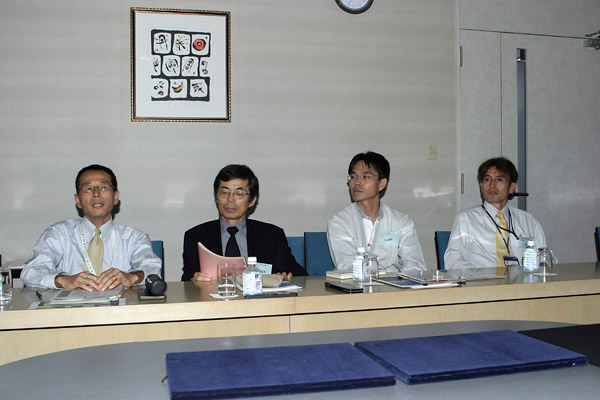
A Technical Briefing at Seiko Epson - (l to r) - Takeo Murata, Kaoru
Iida, Tatsuo Hara, Junya Kamijo
After
a welcome by Mr. Kaoru Iida, General Manager of the Watch Brand
Department, we are given a technical
briefing and demonstration of the Spring Drive mechanism by Mr. Tatsuo
Hara, who
was one of the developers of the Spring Drive technology working with
Yoshikazu
Akahane. Mr. Hara gave us a detailed description
of how the Spring Drive movement works, using the Tri-Synchro Regulator
in place of the traditional lever escapement.
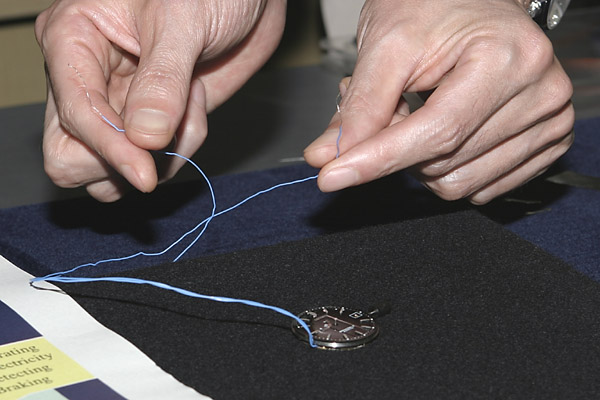
Tatsuo Hara Demonstrates the braking of the Glide Wheel of the
Tri-Synchro Regulator
In addition to the
Tri-Synchro Regulator, the innovative Magic Lever winding system
originally
developed in 1959 is also demonstrated.
This bi-directional dual-pawl winding system is both simple and
efficient – and in Spring Drive trim is 30% more efficient than
traditional
click-wheel based automatic winding systems. (Ron
DeCorte will soon be sharing an
in-depth investigation of a pre-production prototype of the movement,
including both the Tri-Synchro Regulator and the Magic Lever.
However, allow
me to give a small preview - the theory and implementation of the
Spring Drive is
both
elegant and ingenious.
After the briefing, we are led on
a tour of the actual
workshop facilities. Seiko Epson has only
five watchmakers who they have certified to perform final assembly and
checking
of the Spring Drive movement – Mr. Junya Kamijo, Ms. Satomi Nakajima,
Ms.
Toshie Tokunaga, Mr. Hitomi Sakai, and Ms. Kaori Washimi.
All have distinguished themselves in national
and international watchmaking skills competitions.
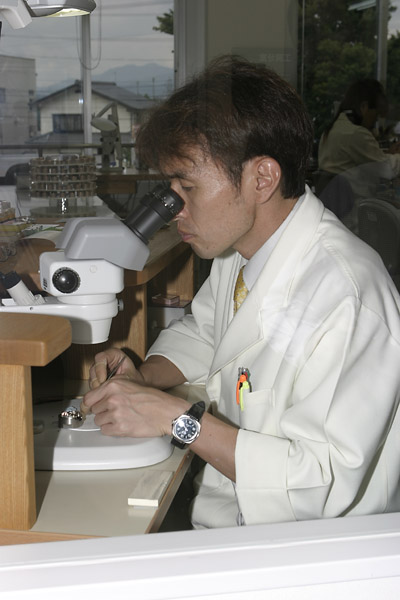
Junya Kamijo, Manager, Watch Technical Engineering Workshop, works on
the Spring Drive Automatic
In the Takumi (“Master”) Studio area,
we are led by a series
of glass windows enclosing the movement assembly and component build-up
areas. The air conditioning and lighting
systems are specialized, to ensure a clean environment for the watches
and optimum vision
for the watchmakers.
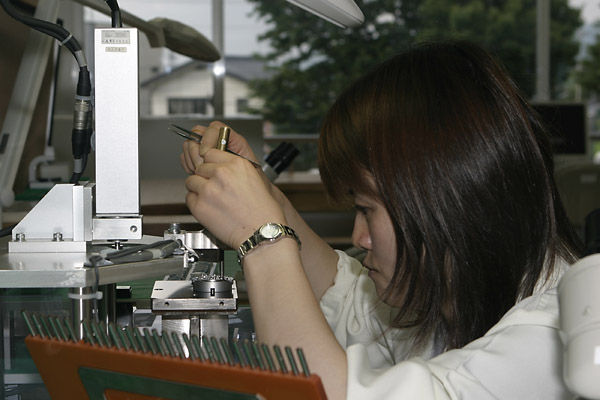
Jeweling of a Spring Drive base plate. The actual setting of
parts is performed by hand, not machine
The watchmakers all
wear white lab coats, and use finger cots or gloves to ensure that
their skin
oils do not contaminate movements, cases, or dials.
Much of the small-scale work is performed
under binocular microscopes rather than loupes.
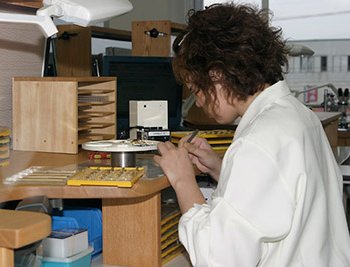 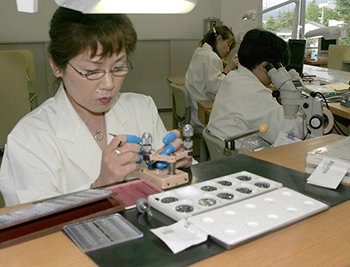
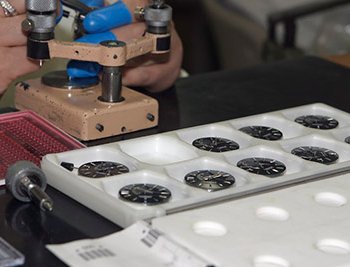 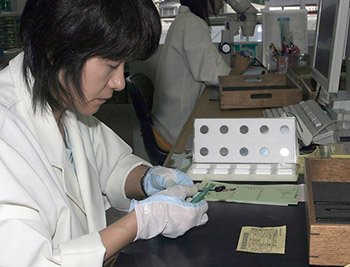
While there
are plenty of computerized devices in use (e.g. computer
controlled
positioning of a base plate that is being jeweled, measurement of
jewelling
depth, etc.), all of the actual building and assembling is done by hand. Each of the five Spring Drive watchmakers is
responsible for the complete assembly of the movement from start to
finish, in
order to ensure high quality.
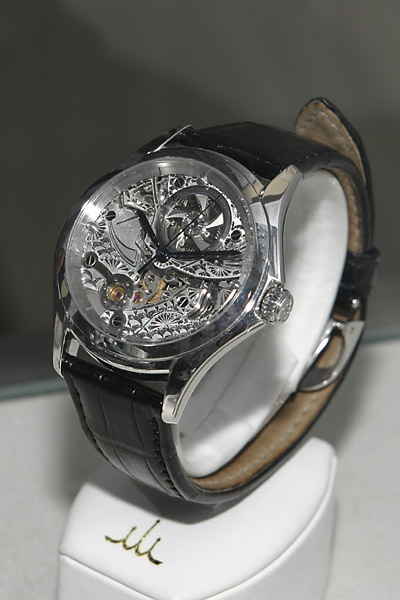
A Credor Skeleton Manual Wind Masterpiece
(Click here for a larger photo)
Downstairs
from the Takumi Studio
is the machining area
where dials and hands are manufactured. Again,
the machines are operated by hand and parts are
inspected by eye via microscope, instead of relying on automation.
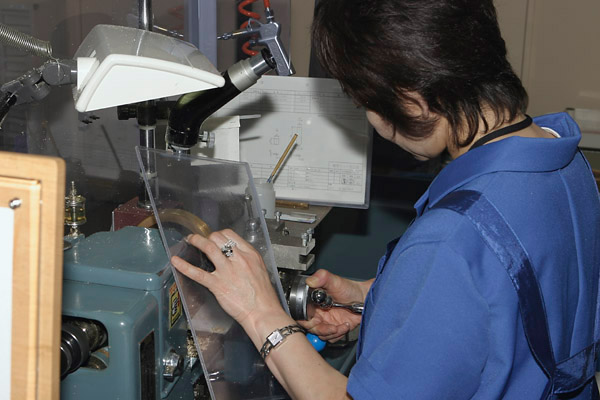
This craftwoman makes applied markers for dials, driving the machinery
by hand

Gold Wire attached to a spinning drum is machined down to form indicies
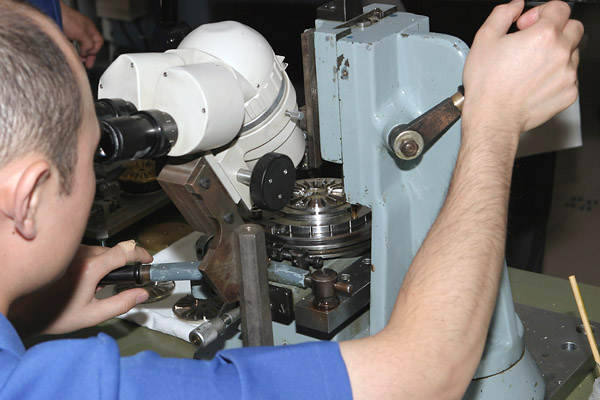
The Making of Hands
Next to the dial and hands
manufacturing area is the Micro
Design Studio, where gold and platinum jewelry watch cases are shaped
and inlaid
with stones, again all by hand.
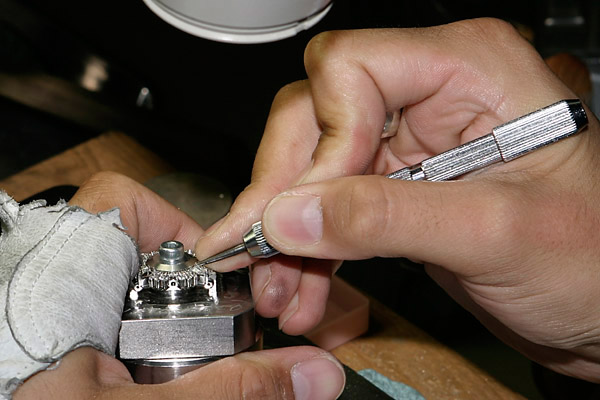
Setting of a Gem in a Jewelry Watch Case
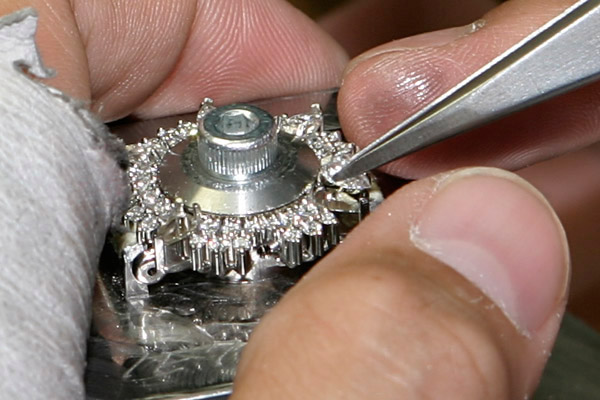
Careful With that Diamond!
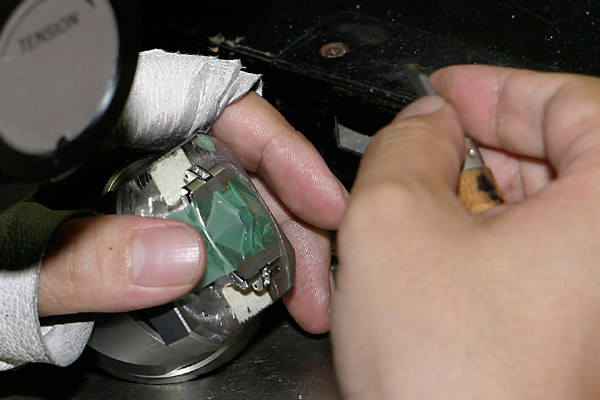
Cutting and Setting Another Diamond Case
We were unable to tour the actual case
making facility (which
is part of this factory), but were shown life size photos of the
machinery used
to make the case blanks from raw materials.
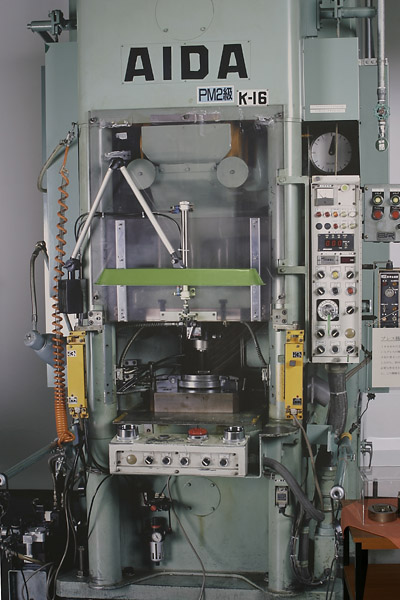
A Case Making Press
Our tour wrapped up with an opportunity
for your reporter to
get a feel for working with the Seiko movements. We
were each given an actual Spring Drive
Automatic movement, a few basic watchmaking tools, and a
binocular
microscope, and were instructed on the disassembly and reassembly of
the winding rotor and
automatic
winding bridge.
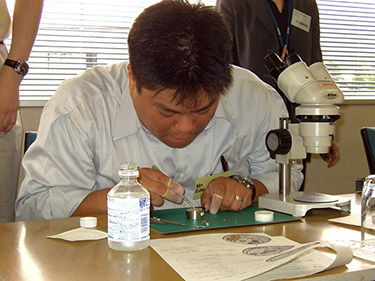 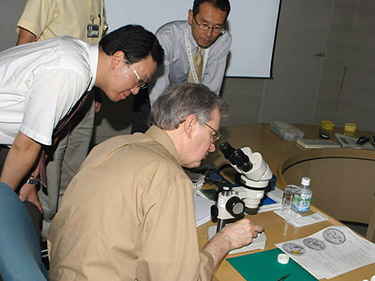
Ed Hahn (left) and Joe Thompson (right) try to become
Spring Drive watchmakers. They do not succeed.
Suffice to say, Seiko Epson did not certify a
sixth
watchmaker for the Spring Drive assembly line.
Indeed, one hopes that the planned 1,000 watch sales target does
not have
to be reduced to 996. However, I am
proud to say that I was at least able to successfully complete all
steps of the
process.
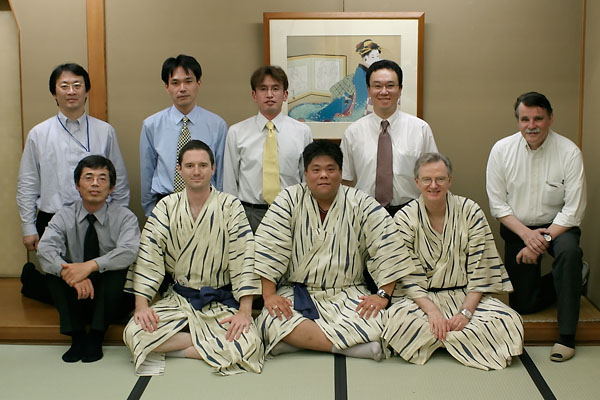
(top row l to r) - Kenkichi Shibata, Tatsuo Hara, Junya
Kamijo, Hiroshi Kamijo, and Bill Shuster (JCK).
(bottom row l
to r) - Kaoru Iida, Jordan Rothacker (IWW), Ed Hahn (TZ),
and Joe Thompson (Watchtime).
To top off a very busy day, our hosts at Seiko
Epson put us
up at a traditional Ryokan hotel in Suwa city, and fed us a wonderful
Japanese
dinner. Throughout the trip, our hosts
were
extremely
gracious and truly made us feel very welcome. Yet,
none of this was
really surprising, as the same attention to detail given to us as
visitors
is
reflected not only in the construction of the new Spring Drive watches
that will be
introduced this
fall, but is also characteristic of the Japanese people and culture.
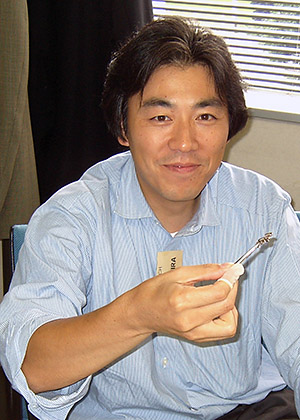
I would like to especially thank Mr. Tadaaki
Ohira, who was
our organizer, tour guide, shepherd, and impeccable host during our
visit. (He didn't get the watchmaking job, either.)
The official Seiko Spring Drive website is:
http://www.seikospringdrive.com
Click here to return to Part 2
Click here to return to Part 1
Click here to return to the TimeZone Seiko Forum
|